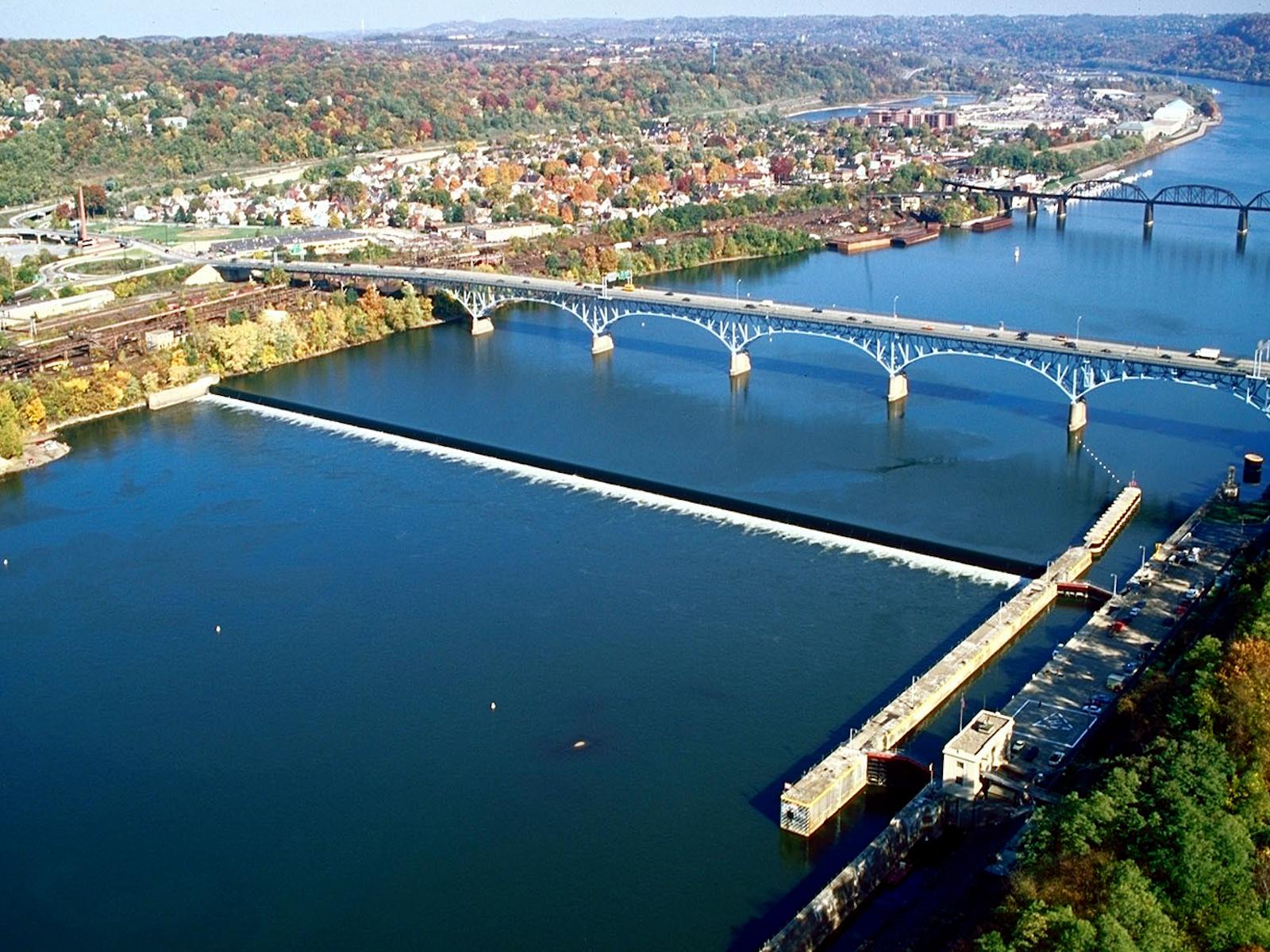The Real Value of Electrifying Non-powered Dams
New methodological approach demonstrates how to assess the economic value, including non-traditional value streams, of converting non-powered dams to hydroelectric facilities

A new report shows how to estimate the total potential value of electrifying a non-powered dam in the United States, like the Allegheny River Lock and Dam 2 pictured here, which is being retrofit to generate power.
(Image by Andrew Byrne | U.S. Army Corps of Engineers, Pittsburgh District)
Hydropower is a key source of renewable energy, but only about 3 percent of the existing dams in the United States generate electricity—the rest are non-powered dams (NPDs). While some NPDs are suitable for conversion to power-generating facilities, few have been retrofitted in the last 20 years due to the complexity and concerns about long-term return on investment. To help overcome some of these barriers, researchers at Pacific Northwest National Laboratory (PNNL) developed an approach to calculate the economic value of a converted NPD, including non-traditional value streams that aren’t usually captured in economic valuations.
“Our approach provides a holistic look at the potential economic benefits of non-powered dam conversion to equip communities and developers with as much information as possible when considering retrofits,” explained PNNL research economist and project lead Sarah Barrows.
Capturing the value of non-market items
The potential benefits of a power-generating dam go far beyond the direct impacts on the power grid—they also include non-market items. For example, retrofitting an NPD might improve recreational access to the area through the addition of fishing platforms and boat access, or enable the growth of nearby energy-intensive industries—both potential non-market impacts. Estimating the full magnitude of potential benefits from NPD-conversion requires putting a monetary value on direct and indirect benefits alike, even if they are not remunerated to the project owner.
“Although indirect benefits and value streams aren’t usually included in economic assessments, they do affect the total economic impact of a dam—and incorporating these values could affect decisions about NPD retrofits,” said PNNL economist and report co-author Kyle Wilson.
To put values on non-market items and impacts, the research team developed a catalog of value streams associated with powering up an NPD, and in a companion report, detailed how to quantify non-traditional value streams at individual sites considering NPD conversions. The report includes a case study demonstrating how to use this approach to quantify indirect value streams at the Allegheny River Lock and Dam 2 in Pennsylvania, which currently has a proposed retrofit in the permitting process.
“We estimated that the annual value of planned retrofit upgrades to recreation alone would range from tens to hundreds of thousands of dollars—a significant economic value that isn’t accounted for in standard valuations,” said Mark Weimar, PNNL chief economist and report co-author.
Together, the catalog and report establish a consistent approach to catalog value streams, identify affected community members and potential impacts, explore effects of different technologies and configurations on value streams, and provide methods and metrics to quantify non-market value streams.
Supporting informed decisions
These tools support informed conversations between community members, developers, and decision-makers looking for economically viable paths to retrofit an NPD. Putting a number on the non-traditional value streams of a non-powered dam conversion provides a way to include these non-monetary services during project planning and development.
This approach can help developers and communities consider and estimate the non-market impacts of their projects and expand the conversation around retrofitting NPDs—hopefully spurring future development,” said Rajiv Prasad, PNNL Earth scientist and co-author. “Understanding and quantifying all the impacts to communities, the environment, and the grid from NPD conversion can help enable decision-makers find ways to move beneficial retrofit projects forward.”
To access the toolkit and learn more about available resources to support NPD conversion planning, visit the project site. The report, Cataloging and Quantifying Value Streams from Non-Powered Dam Conversion, was authored by PNNL’s Sarah Barrows, Kyle Wilson, Mark Weimar, and Rajiv Prasad. This research was supported as a seedling project by the Department of Energy’s Water Power Technologies Office.
Published: March 28, 2024